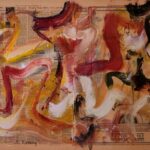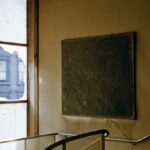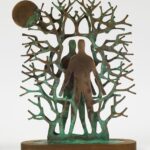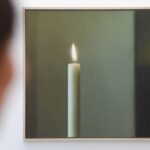“That’s a Freud?” critic Morf Vandewalt (played by Jake Gyllenhaal) asks Gita (Nitya Vidyasagar), an art cataloguer in Los Angeles. He gazes towards a large canvas in the corner of the room, a piercing portrait of a naked man staring directly at the viewer.
“It’s been in a crate since ’92,” Gita answers, “and it’s going back in one.”
Velvet Buzzsaw, a 2019 satirical horror film in which members of L.A.’s exclusive art world are gruesomely murdered by the artworks they sell, review, and display, features dozens upon dozens of paintings, sculptures, and installations, most of which were created specifically for the film. One character has their arm sawed off by a reflective orb reminiscent of Anish Kapoor’s Cloud Gate. Another is swallowed by a moving pool of paint not unlike the poured latex of Lynda Benglis.
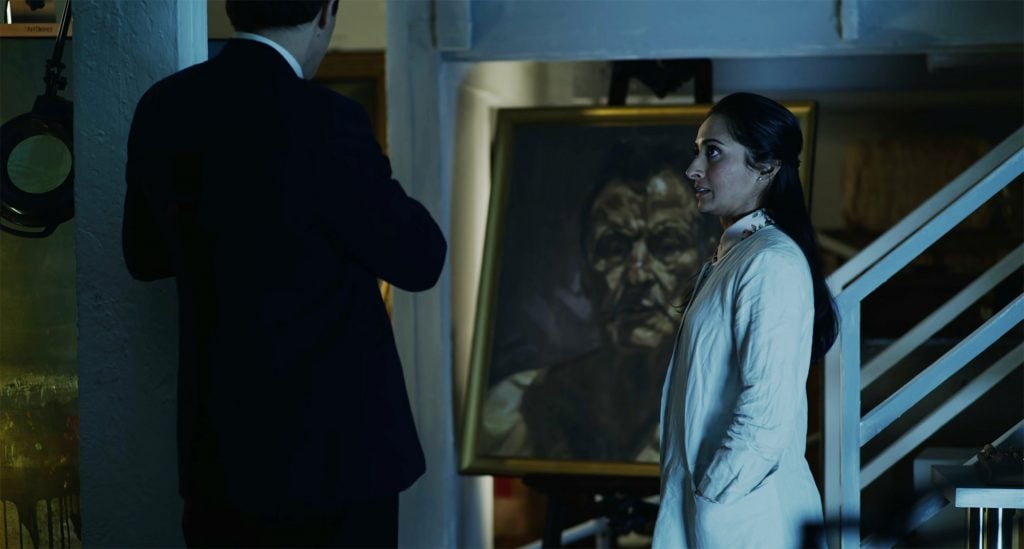
Jake Gyllenhaal and Nitya Vidyasagar observing a portrait by Lucian Freud in Velvet Buzzsaw (2019). Photo: Screen grab.
The aforementioned Freud, titled Reflection (Self-Portrait) (1985), stands out from the bunch. Not only because it doesn’t kill anybody, but also because it’s a real-life creation by Lucian Freud. Previously exhibited at the Irish Museum of Modern Art and the Royal Academy in London, the 1985 work is indicative of Freud’s style, his expressive brushstrokes evoking psychological musings worth of his grandfather, Sigmund.
Freud’s work is elusive, its meaning measured through response rather than reflection. Velvet Buzzsaw, for its part, isn’t a commentary on the hypocrisy or vanity of the art world so much as it simply uses this world as a colorful backdrop to tell a visually interesting murder mystery.
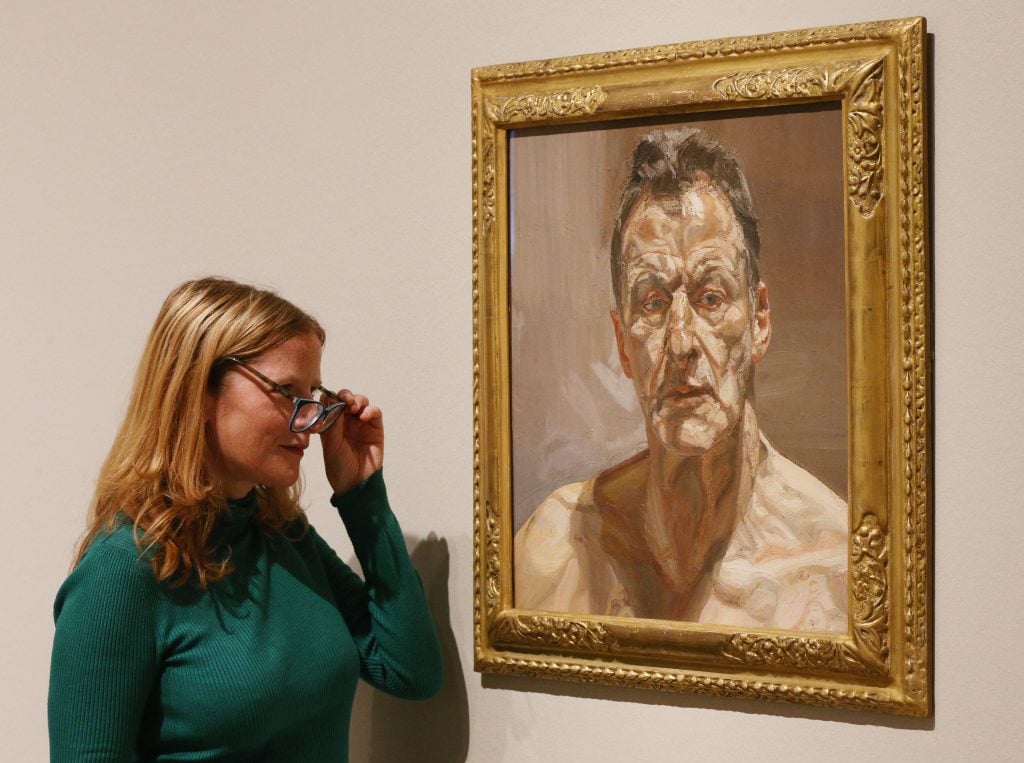
Lucian Freud, Reflection, Self Portrait (1985) on view at “Lucian Freud: The Self-portraits” at the Royal Academy of Arts, London. Photo: Jonathan Brady/PA Images via Getty Images.
If anything, both Freud and the film share an obsession with death. According to art historian Martin Gayford, author of a two-volume book on the artist, Freud saw “fear of death” as “a ‘great handicap for any painter.’ At different times he suggested that both [Francis] Bacon and Balthus had suffered from it. Clearly, he was determined to face it himself and did so in the sequence of self-portraits that began in the 1930s and concluded with Self-Portrait Reflection.”
Freud sought to overcome death by confronting his own frailty in his art. When his dentist told him that he might have to pull his two front teeth, he allegedly told him that he would immortalize the result in a new painting.
“Fortunately for the artist, but perhaps unfortunately for art,” Gayford wrote, “these extractions were never carried out.”
In a film filled with murderous art feasting on critics and curators whose inflated egos arise from a refusal to acknowledge their own mortality, Freud’s work represents an escape. Fatefully for the characters, however, it’s put back in storage.
As Seen On explores the paintings and sculptures that have made it to the big and small screens—from a Bond villain’s heisted canvas to the Sopranos’ taste for Renaissance artworks. More than just set decor, these visual works play pivotal roles in on-screen narratives, when not stealing the show.
Follow Artnet News on Facebook:
References: this article is based on content originally published by on Artnet. You can read the full article here.

